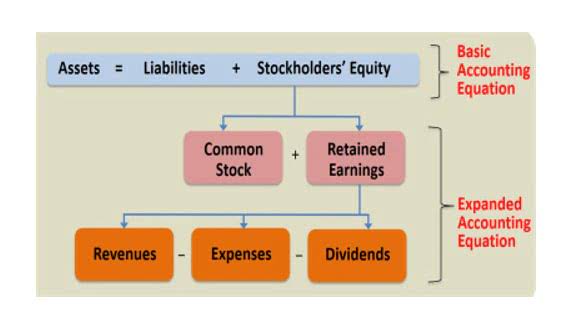What is a Flexible Budget? Definition Meaning Example

If the machine hours in February are 6,300 hours, then the flexible budget for February will be $103,000 ($40,000 fixed + $10 x 6,300 MH). If March has 4,100 machine hours, the flexible budget for March will be $81,000 ($40,000 fixed + $10 x 4,100 MH). Once you identify fixed and variable costs, separate them on your budget sheet. The last step of developing a master budget uses the components you have compiled to create a budgeted balance sheet.
These are added to the fixed costs of $12,500 to get the flexible budget amount of $24,750. In its simplest form, the flex budget uses percentages of revenue for certain expenses, rather than the usual fixed numbers. This allows for an infinite series of changes in budgeted expenses that are directly tied to actual revenue incurred. However, this approach ignores changes to other costs that do not change in accordance with small revenue variations. Consequently, a more sophisticated format will also incorporate changes to many additional expenses when certain larger revenue changes occur, thereby accounting for step costs.
Positive Cash Flow: How to Get In The Black
Subsequently, the budget varies, depending on activity levels that the company experiences. Unlike a static budget, a flexible budget changes or fluctuates with changes in sales, production volumes, or business activity. A flexible budget might be used, for example, if additional raw materials are needed as production volumes increase due to seasonality in sales. Also, temporary staff or additional employees needed for overtime during busy times are best budgeted using a flexible budget versus a static one. A great deal of time can be spent developing step costs, which is more time than the typical accounting staff has available, especially when in the midst of creating the more traditional static budget.
- The ending finished goods inventory budget is necessary to complete the cost of goods sold budget and the balance sheet.
- A static budget is useful for planning and setting expectations, but it has some limitations.
- A budget helps create a roadmap for where you want your business to go.
- Every program, every touchpoint, every step (creative, production, delivery) can require handoffs from separate teams and providers.
- You should use a flexible budget for controlling and evaluating your performance, as it helps you compare your actual results with your budgeted amounts based on the actual level of activity or output.
The company must determine the number of sales the company expects to make in the next year. Then, it must budget how many sales in units it needs to make to meet the sales budget and meet-ending inventory requirements. Most companies have an ending inventory they want to meet every month or quarter so that they don’t stock out. A master budget is a central planning tool that gives an overview of a business’s finances, outlining cash flow forecasts, financial statements, and the financial plan.
Consolidate production into one stream
The budgeted balance sheet gives the ending balances of the asset, liability, and equity accounts if budgeting plans hold true during the budgeting time period. A strategic plan usually forms the basis for an organization’s various budgets, which all come together in the master budget. It usually coincides with the fiscal year of the firm and can be broken down into quarters and further into months. If the firm plans for the master budget to roll from year to year, then it would usually add an extra month to the end of the budget to facilitate planning.
Total net income changes as the amount for each line on the income statement changes. The net variance in this example is mainly due to lower revenues. Choosing the right accounting software and keeping your bookkeeping up to date can help you track the numbers you need for your budget. Here are some of the best accounting software programs you can consider.
How we test cell phone plans
Any item that is not in cash, such as depreciation, is ignored by the cash budget.
Of the $4 million in budgeted cost of goods sold, $1 million is fixed, and $3 million varies directly with revenue. Thus, the variable portion of the cost of goods sold is 30% of revenues. Once the budget period has been completed, ABC finds that sales were actually $9 million. If it used a flexible budget, the fixed portion of the cost of goods sold would still what is a flexible budget be $1 million, but the variable portion would drop to $2.7 million, since it is always 30% of revenues. The result is that a flexible budget yields a budgeted cost of goods sold of $3.7 million at a $9 million revenue level, rather than the $4 million that would be listed in a static budget. A flexible budget is kind of a hybrid approach to financial planning.
A common way to set up a flexible budget, for example, is to budget for variable expenses based on level of output. A static budget helps to monitor expenses, sales, and revenue, which helps organizations achieve optimal financial performance. By keeping each department or division within budget, companies can remain on track with their long-term financial goals.
But if actual activity changes in key categories (such as fixed costs, variable costs, or production volume), you may quickly deviate from the budget and it may feel like a wasted effort. @serenesurface– The article described in detail the advantages and disadvantages of both budgets. I think that this is a decision that each business has to make based on its revenue, expenses and how predictable these are. If you know what your fixed and variable costs are and if you know exactly how your expenses are going to change in the near future, then a flexible budget will work for you. In an unpredictable financial world, flexible budgets are helpful in manufacturing industries where costs change with a change in activity level. Companies must involve experts to make accurate budgets, ensuring there is less scope for error and improving variance analysis.
Best Budgeting Software for Small Businesses
A 2020 Clutch survey found that half of small business owners surveyed said they don’t have a business budget, with the smallest businesses least likely to have one. Before we dive into the differences between different types of budgets, let’s start with the premise that a business should have a budget. If the factory has to use more machine hours one month, its budget should logically increase. Conversely, if it uses them for fewer hours, its budget should reflect that decline.



Leave a Reply